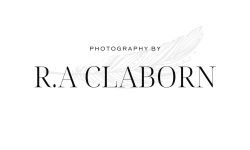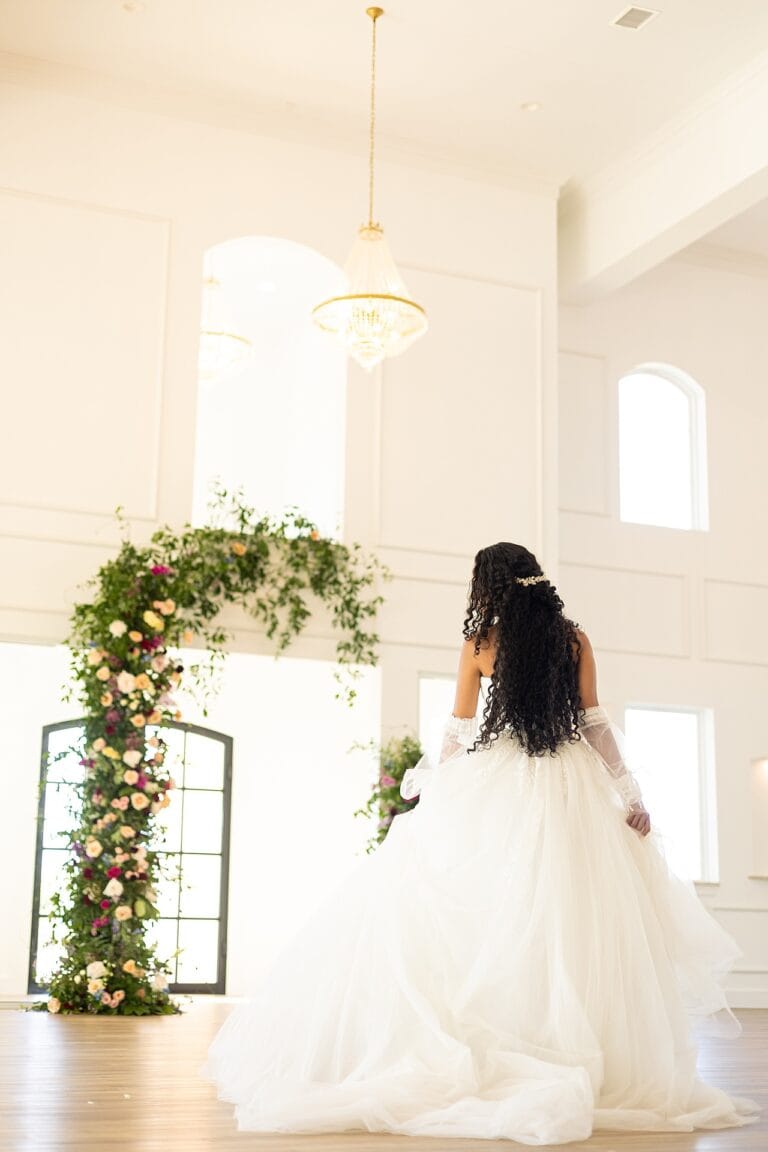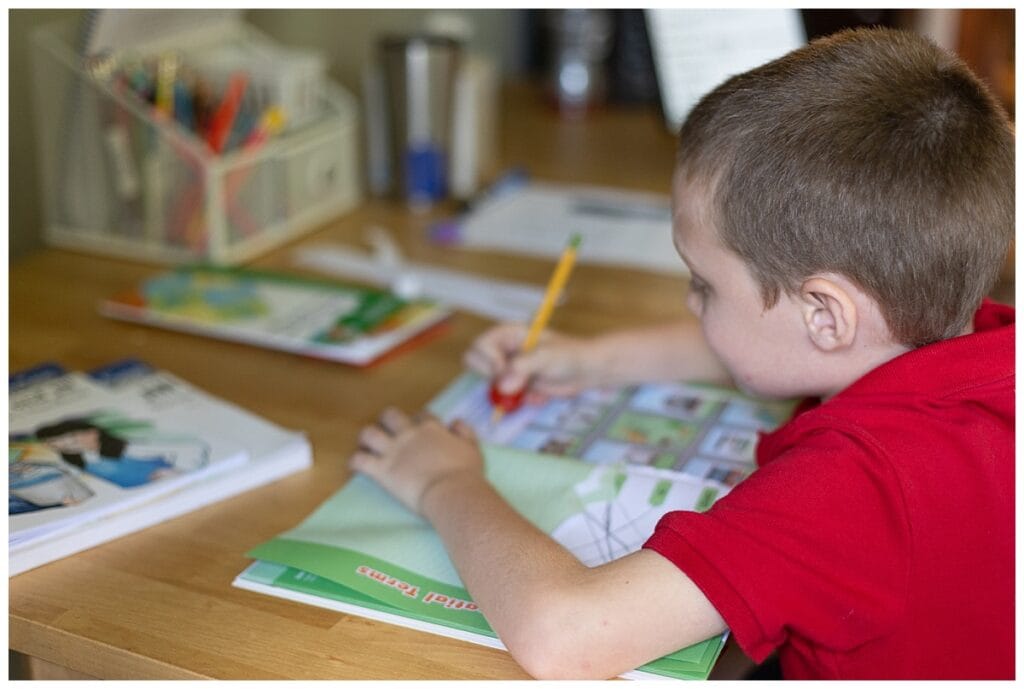
When it came to choosing our homeschool curriculum, I really didn’t slave over researching our options–there are a ton for sure–I googled “hands-on” curriculums, or sensory focused ones and then looked through blogs review the options that popped up. Timberdoodle was a recurring option and I liked that it was a curation of materials rather than all the subjects composed by one company; the most frequent complaint I see in homeschool curriculums is the parents liking how they handle one subject but not others, but if they choose the entire curriculum they felt stuck with it.
How Timberdoodle works: they create kits for each grade level but give you the option to customize the kits to better suit your needs. Shopping for this was like a super nerdy Christmas and I wanted to get all the things. In hindsight, I’d say less is more–days where we tackle around 5 subjects seem to be much better than days when we do more, but that’s also the beauty of homeschool, you are free to adapt to suit your family’s needs as you go.
Overall, we enjoyed our Kindergarten kit to order our First Grade kit from them as well, however we did much more customizing in our second order and ordered much less than they included in the second kit (you can order items individually, which we did for Rowan since we only wanted one or two items for him, and you need to order a minimum amount to get the kit’s discount).
Customer service has been great, and you can easily earn rewards to get more items for your school or just some fun extras.
They strongly emphasize logic and critical thinking skills, a good foundational skill I think should be a bigger factor in education (STEM is overrated and as someone with two science degrees, that is the hill I will die on), so I appreciate the inclusion of various puzzles and games, which can be used to teach a multiple of skills simultaneously.
I’ve reviewed each item in our kit individually below, if there isn’t a link then that exact item is no longer sold via Timberdoodle (however a similar item might still be available). Some we altered how we used them or stopped using them entirely after a while based on Ames’s specific needs and recommendations from his psychologist following his ADHD diagnosis (that we got after we had started using the kit).
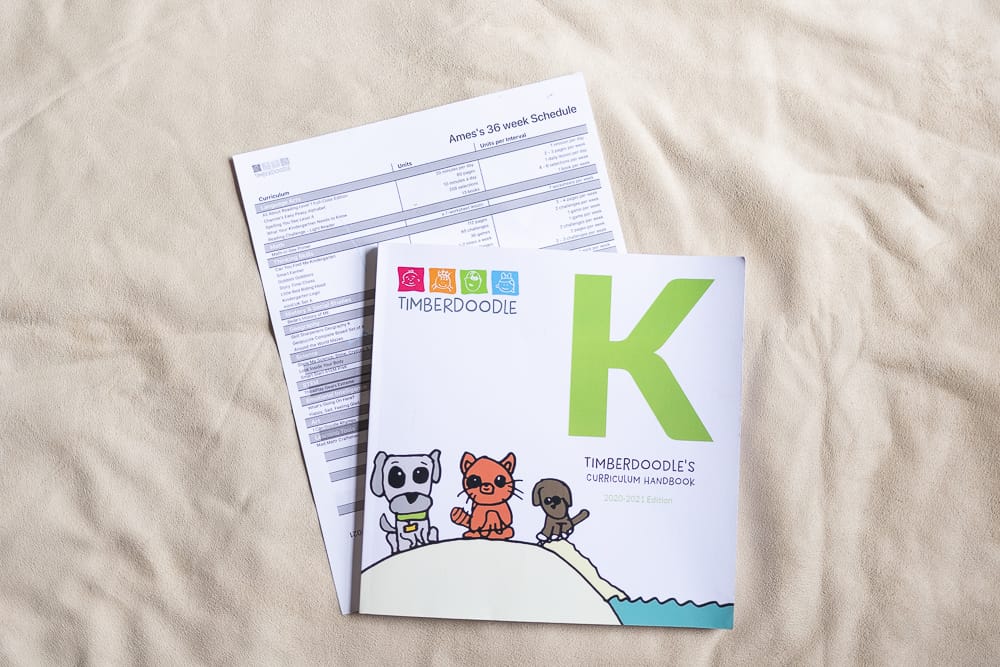
Handbook & Scheduler
I like that the handbook walks you through the benefits of the kits items, however it does not match your kit if you’ve customized it, so depending on how much altering you do, it might not have any insight to offer you. This is a good tool if only one parent/caregiver was involved in choosing materials and you need to get others up to speed.
As a fan of checklists, I enjoy being able to print off the scheduler and have an easy view to see how much we’ve accomplished each week. Definitely did not play with it enough the first time around so that led to some frustration on my end, but now that we’ve started our second year with their kit, I’ve delved into it a bit more. I still wish it would let you make adjusts in the middle of the year without it completely restarting the week numbers but otherwise it’s great for controlling how much each week (you can be as specific as what days of the week you do what assignments) and whether you start out with a heavier course load or a lighter one (and finish with more work at the end of the year).
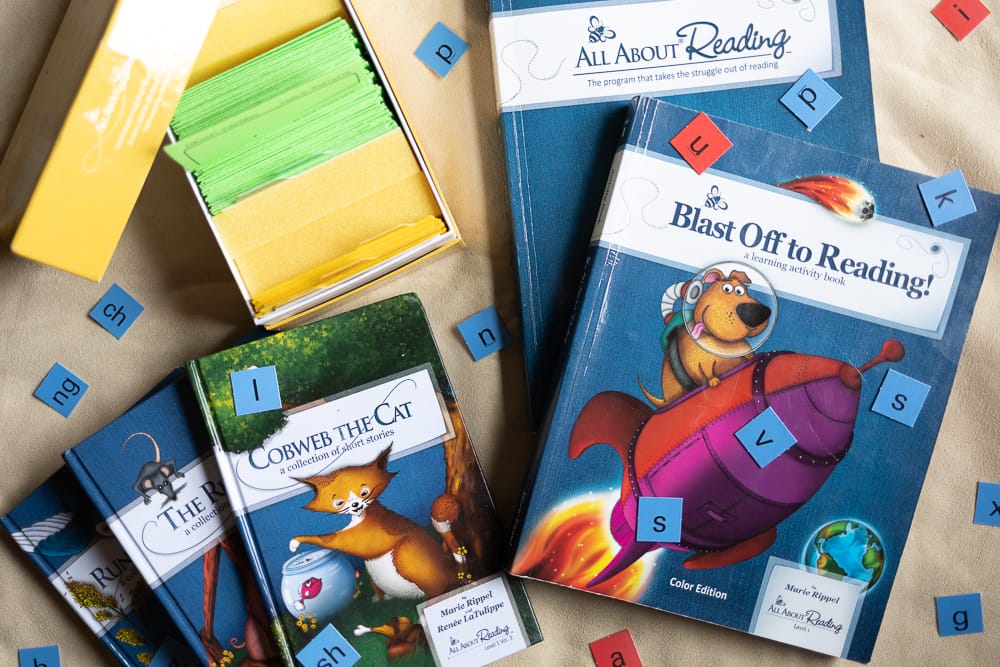
One of those curriculums that allows you to adjust how much you do–there are plenty of activities mentioned in the teacher’s manual I haven’t touched and it outright tells you to tweak based on your child’s individual needs (hello homeschooling!). My only complaint is for the magnets and cards not being sturdier to last longer.
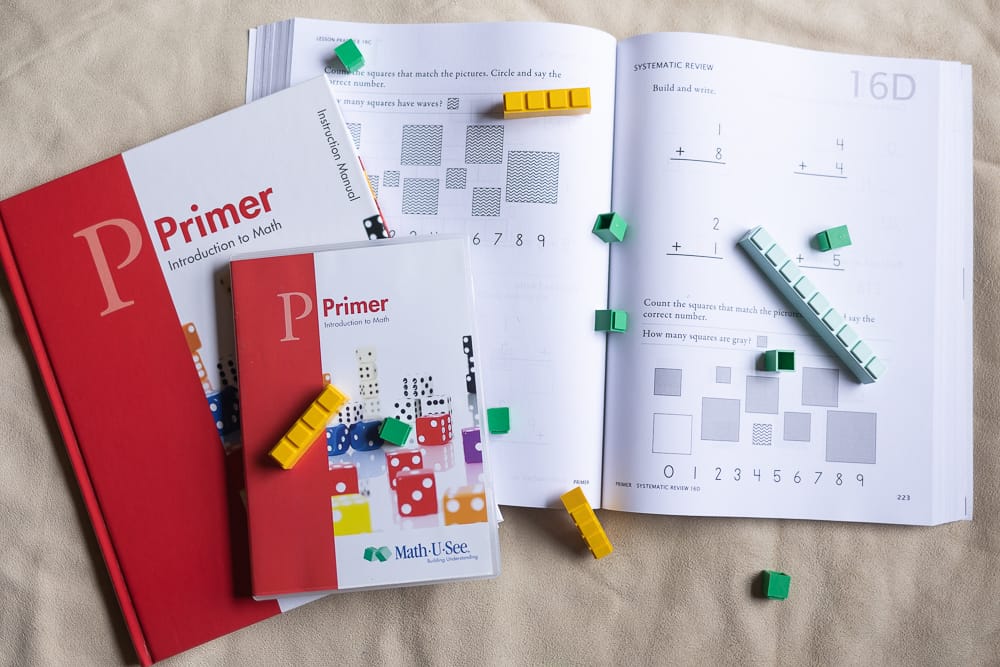
I vaguely remembered having these blocks when I was a homeschool kiddo, but I don’t recall if we used this curriculum. It’s very simple and gives you just what you need. It might feel too rudimentary at the beginning but it does let your kiddo get a solid basis. And it comes with a DVD with videos to introduce them to the lesson too, shockingly Ames has really gotten into these and actually asks to watch the super mundane filmed-in-the-80s instructions.
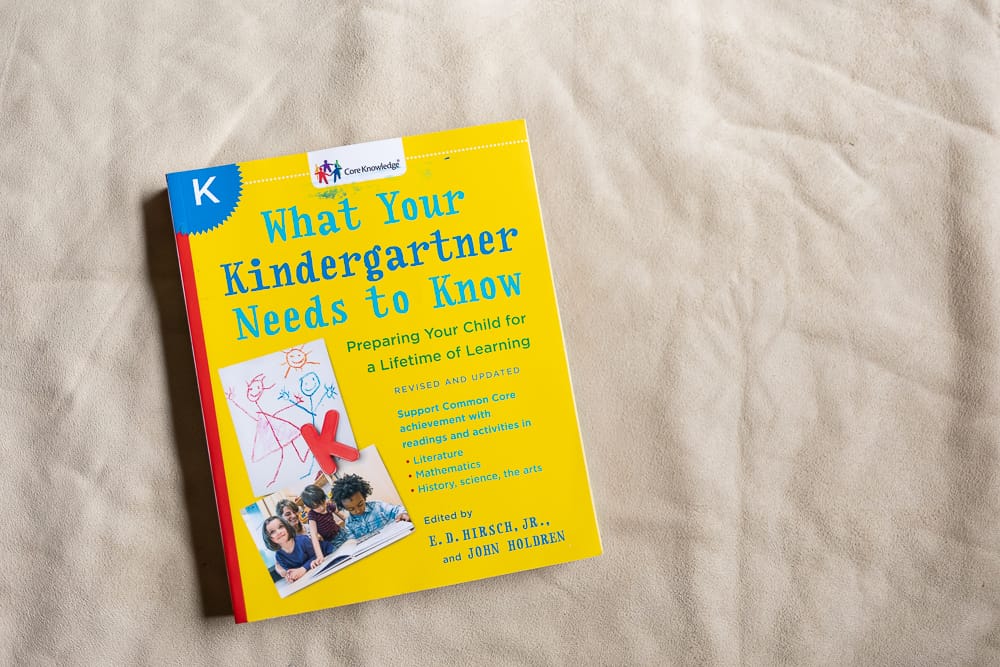
May have used this 5 times, looking back I would have just skipped getting this and gotten various library books to read each week.
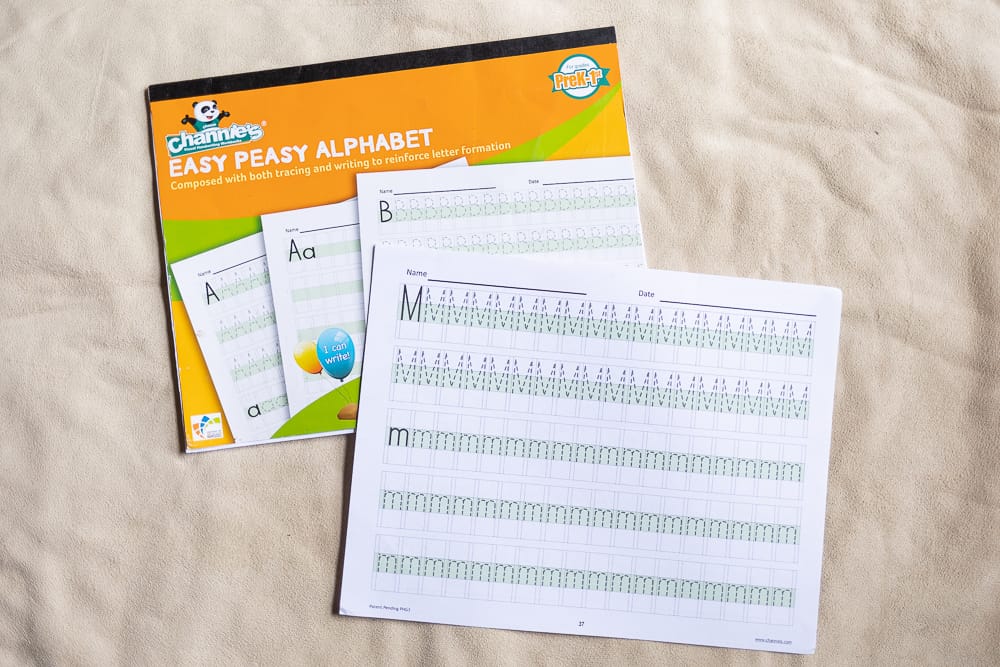
This was a good little workbook, it starts with tracing but has them freehand (for a non-tracing method see Handwriting Without Tears–this is what our Occupational Therapist recommends). We ended up stopping regular use of it after he got the official ADHD diagnosis and the psychologist recommended avoiding repetitive tasks if he had mastered it already, so we only brought these out if I noticed him struggling with a particular letter.
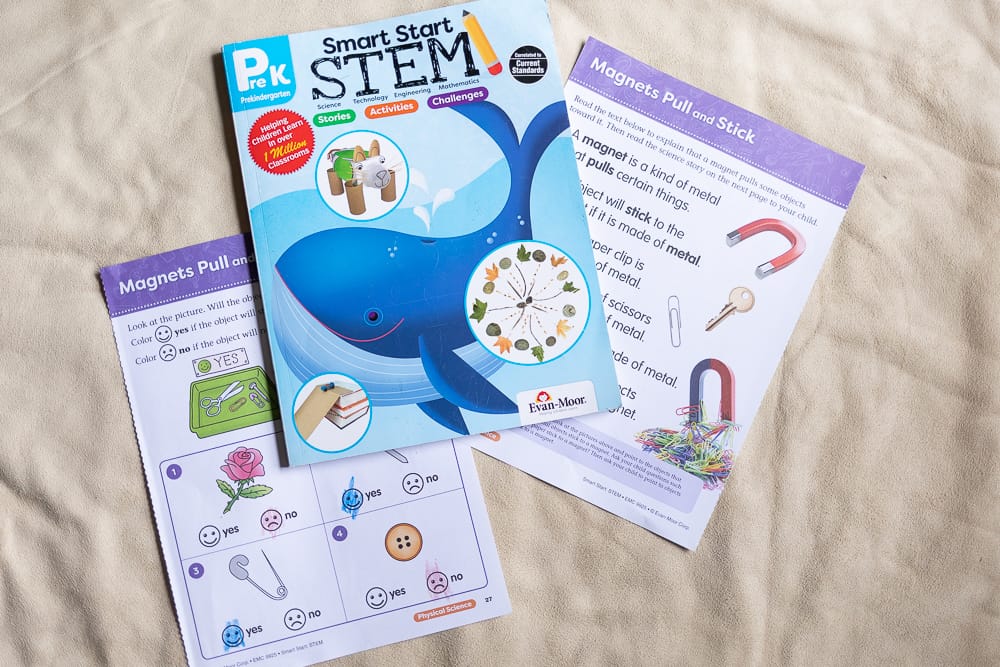
This was one of the items I swapped for, I did not care for the original workbook included; the original was focused on way too specific information in my opinion (kindergarten kids do not need to be learning about atomic structure). This one, took me a bit to like, but over time I saw that it allowed for creativity while essentially teaching the scientific method without clunky terminology.
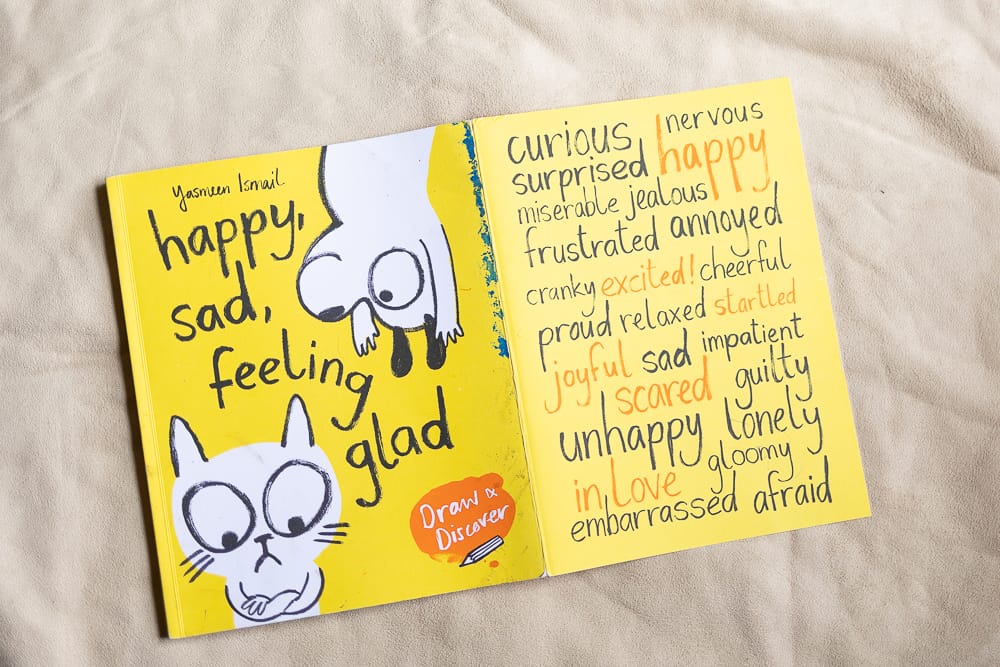
I didn’t dislike this but I’m not raving about it either–every page or two has a prompt for the child to create something around (ex: Dog is sad he dropped his ice cream, draw dog a new ice cream), it was good for a simple activity that Ames could work on independently but I don’t know how much of the emotional intelligence he got out of it.
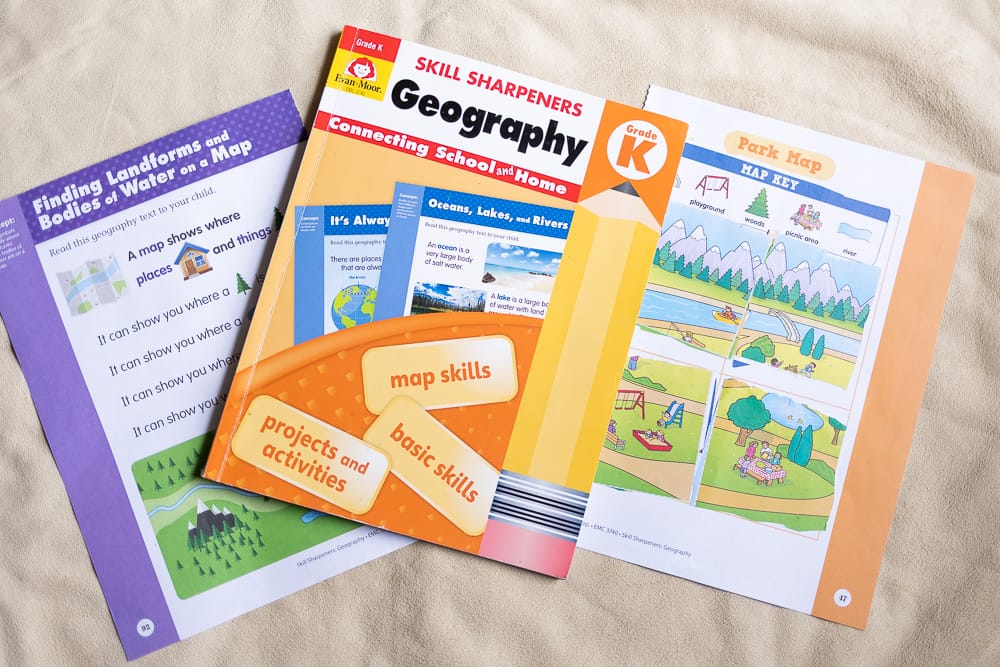
I like that it has a variety of tasks despite being a workbook–it starts with introducing new terms, then some writing/drawing, cutting and pasting, and finally making something (like cutting out pieces to makes a volcano). Geography is one of Ames’s favorite subjects, so he would happily do the whole lesson in one day rather than a week.
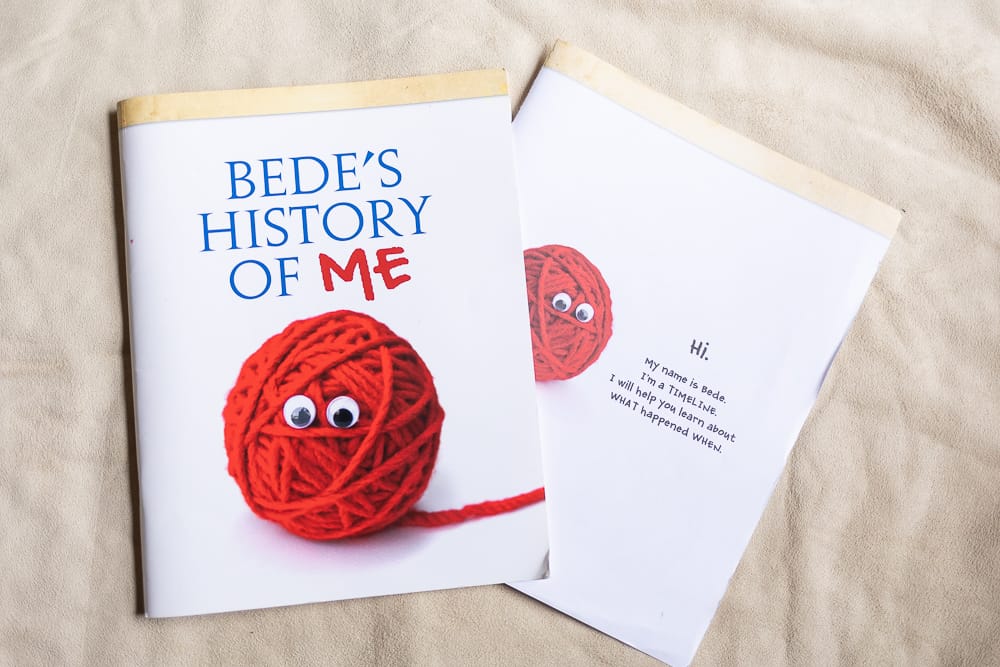
I really enjoyed this book. Rather than start telling kids about historical events, it works to give them a basis for what History is: teaching them to build a timeline, the order of events, etc. Once it has those foundations in place, it starts introducing specific events on a small scale.
Note: Timberdoodle has nonreligious kit options, this book does discuss major Christian events and Church History.
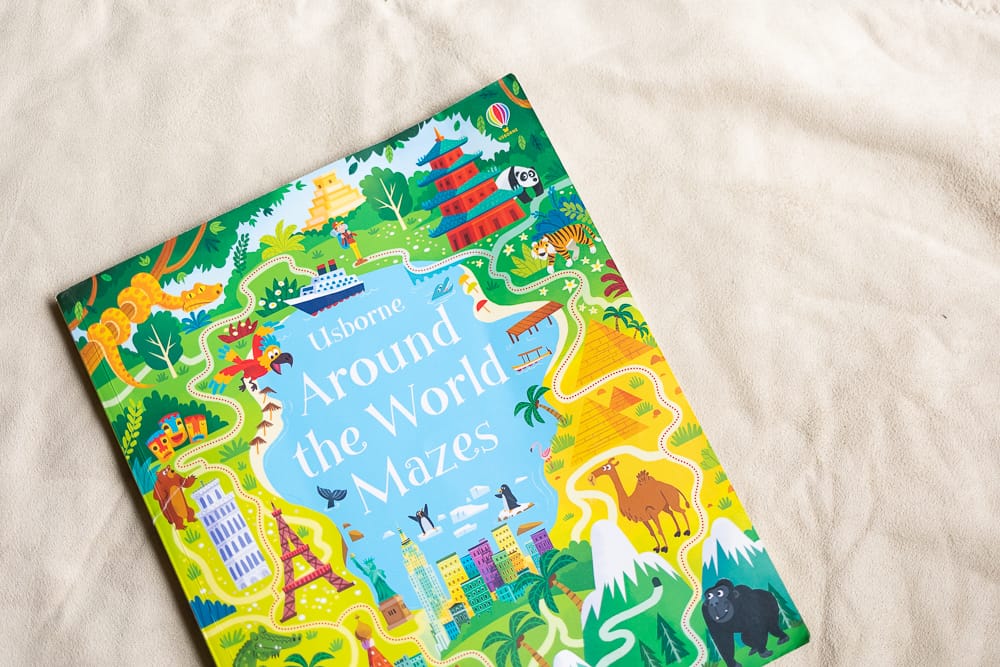
This book doubles as logic (solving the maze) and an intro to social studies as it sometimes references specific places in the world, so you could easily build this out into other activities if you wanted. Always make sure you check the info for each puzzle as some mazes have specific rules.
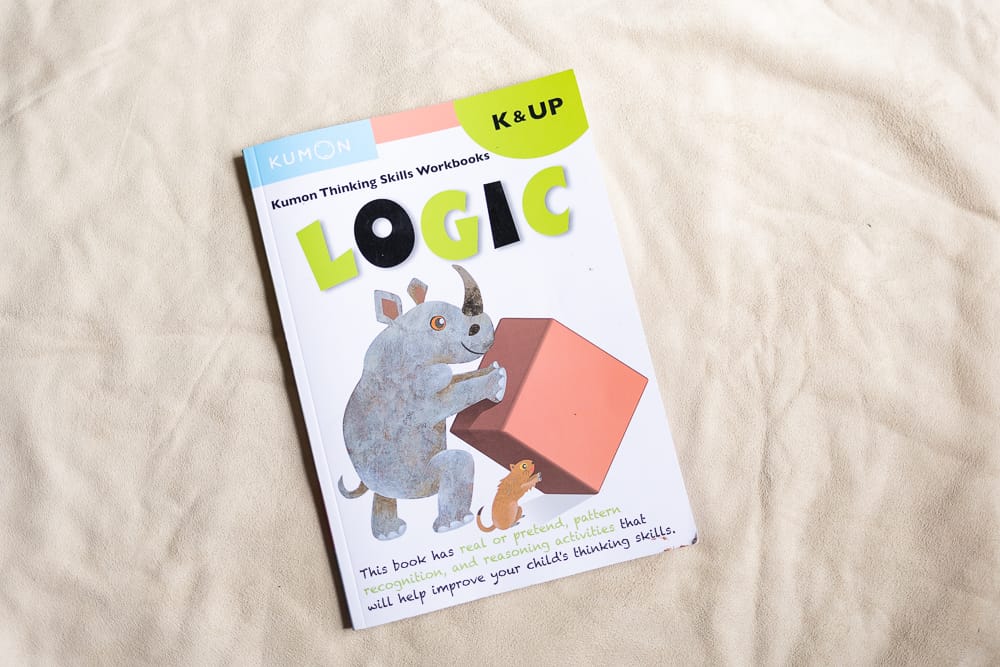
Kumon Kindergarten Logic
Good independent logic puzzle problems that kept similar structure so once Ames learned what the first one asked, he was able to do the rest of that set on his own.
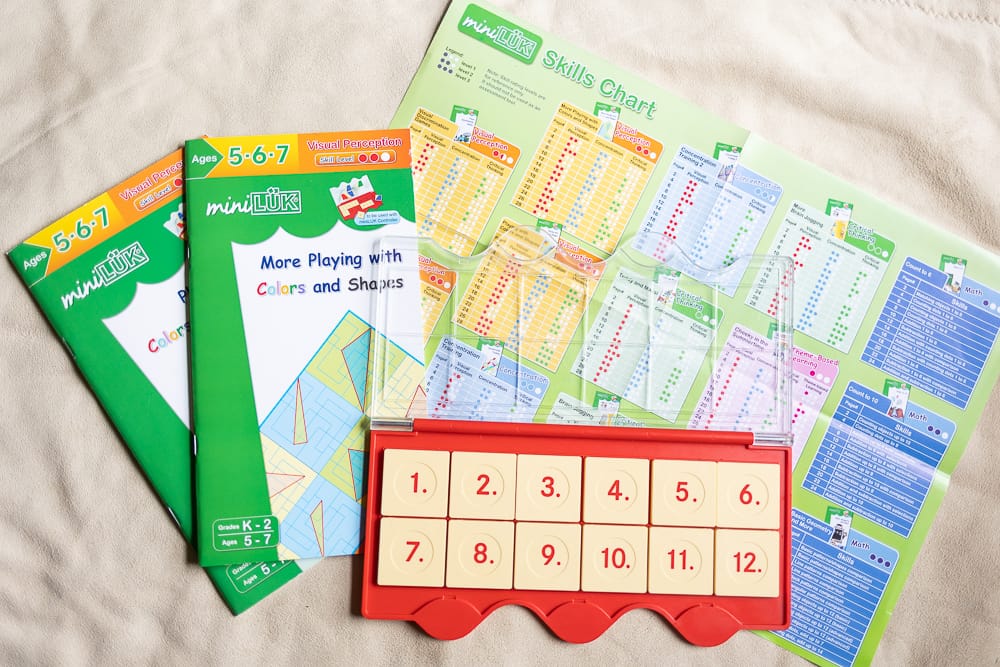
miniLuk
There are one or two of these I could not figure out, otherwise it’s another great logic puzzle option (we opted for this instead of the included workbook to have something physical–warning it is quite a price jump). My biggest issue is the answers are one the same page as the puzzle (when done, you flip the tiles to reveal a color pattern, if it matches the answer key then they got it all right, doesn’t take long for your kiddo to figure this out) so we ended up keep a sticky note in the book to cover the answer.
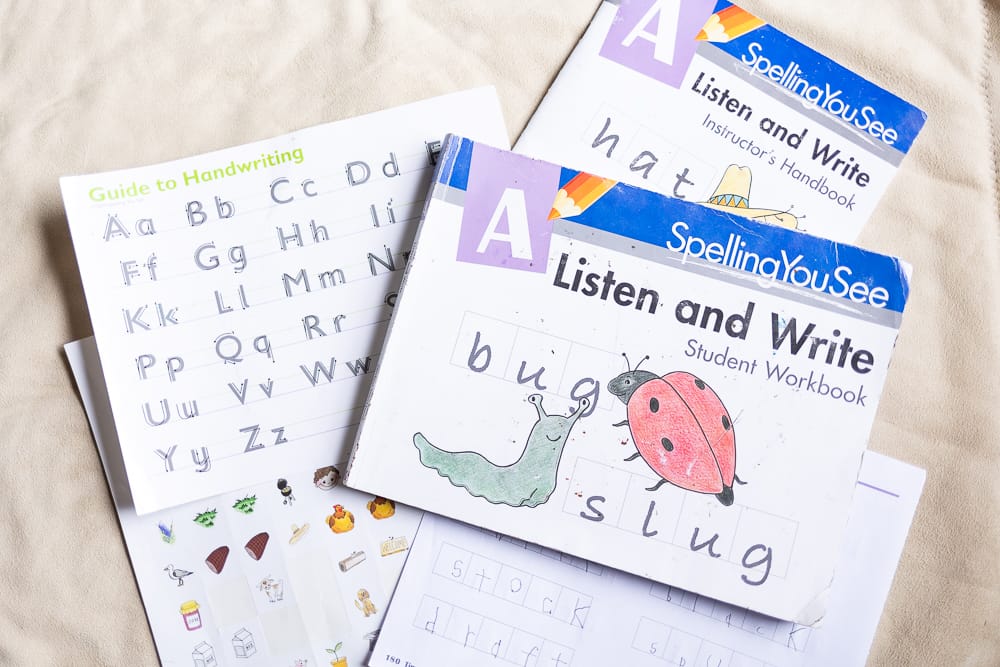
This Ames took to so quickly, in the beginning he seemed to grasp reading more from this workbook than his reading lessons. My only issue is the font they chose, things like lowercase “t” and “l” have a slight curve to them which he mimics but not as subtly so it throws his writing off a bit.
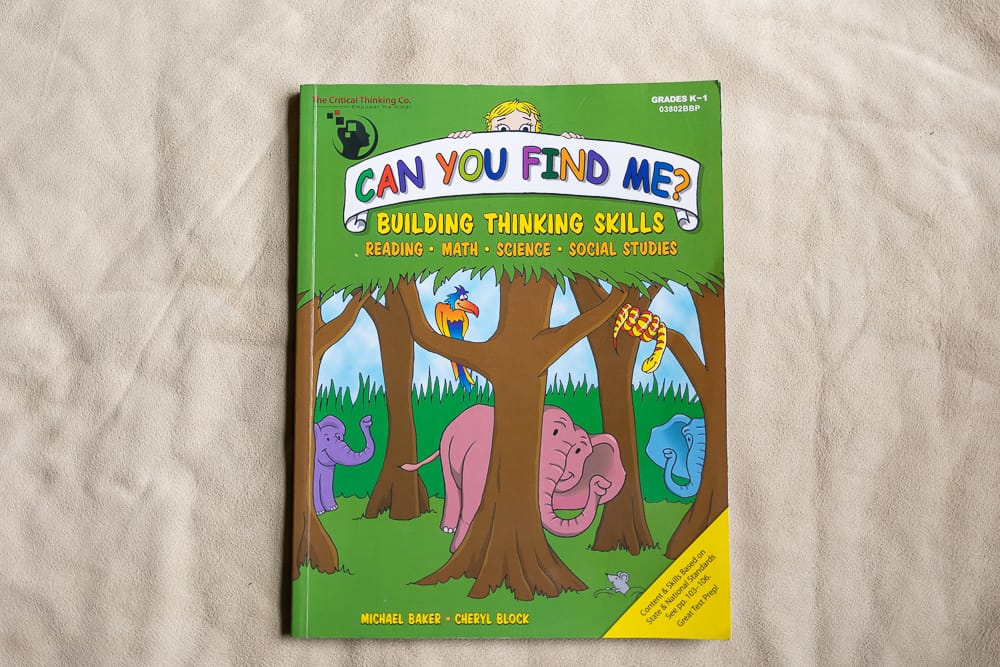
These are good puzzles, however, they are involved words problems, so felt like I was handholding to walk him through these. I feel it would be better for a later grade when he can read and work through the problem on his own.
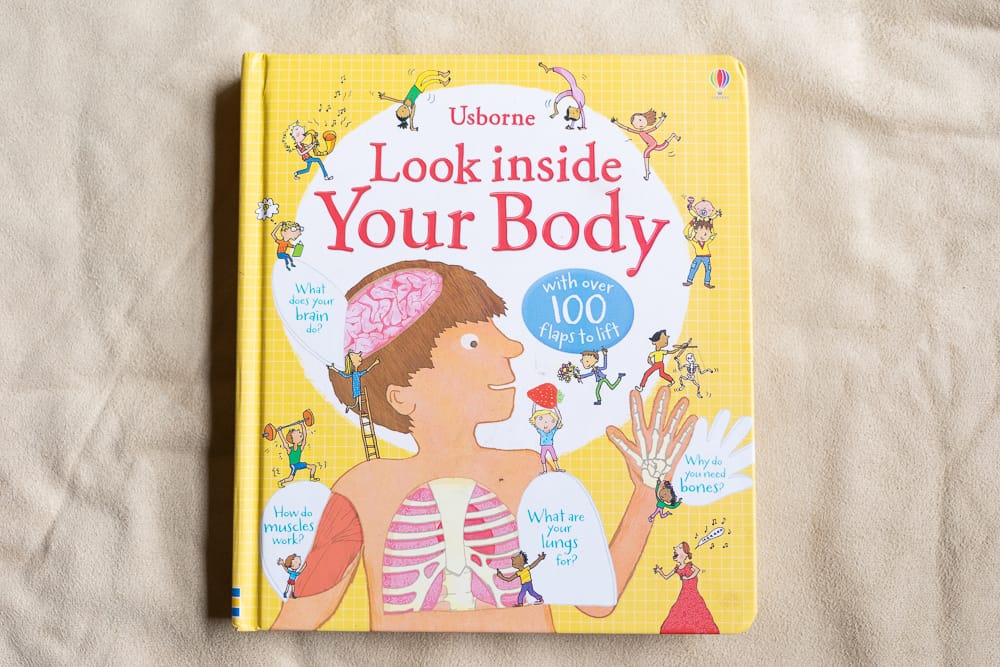
Good little book, Ames enjoyed going through it and now it’s just a part of their library.
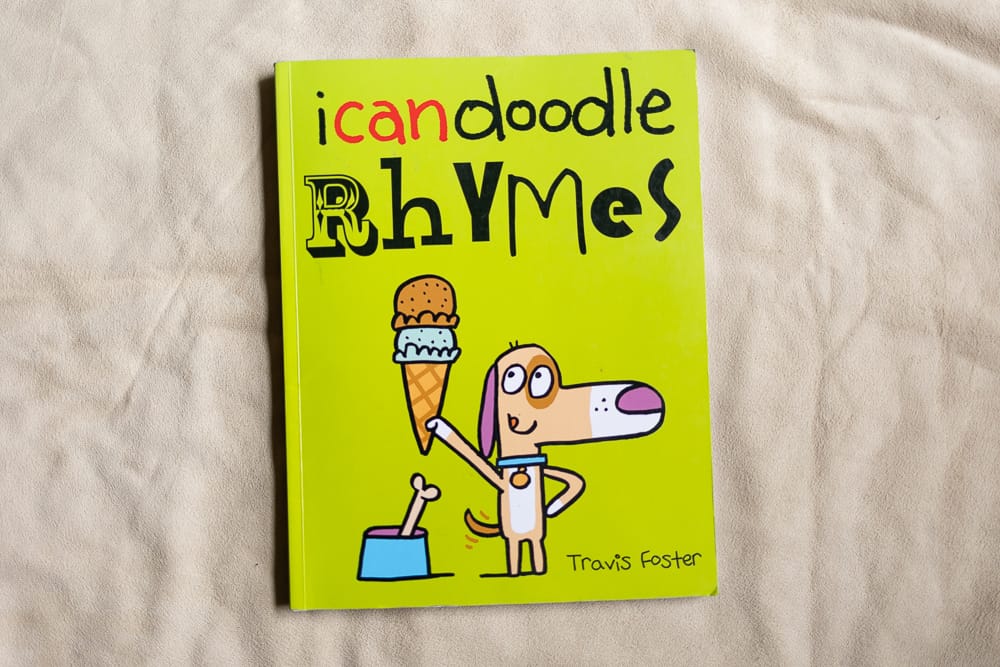
Good book with simple tasks that served multiple purposes: writing, spelling/reading, and drawing. He could be independent with this outside of words he didn’t know (as we progressed through the year, he could read most words without my assistance).
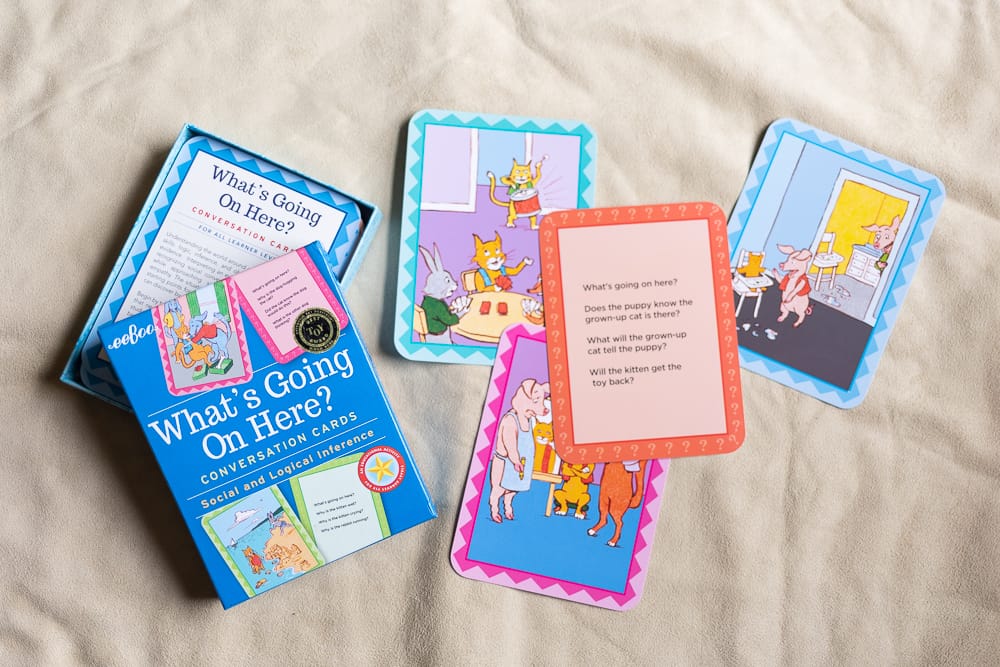
I really liked these, kinda wish I kept them out for us to do again with First grade. You would draw a couple of cards and ask the child “what’s going on here?” and they would then describe the events and hopefully put the clues from the picture together. The card also has prompts for parents if you need help asking questions without guiding them to a certain answer (the hardest part). It was interesting to see Ames work through them, as some he clearly got the point of the photo, while others he started interjecting his own stories.
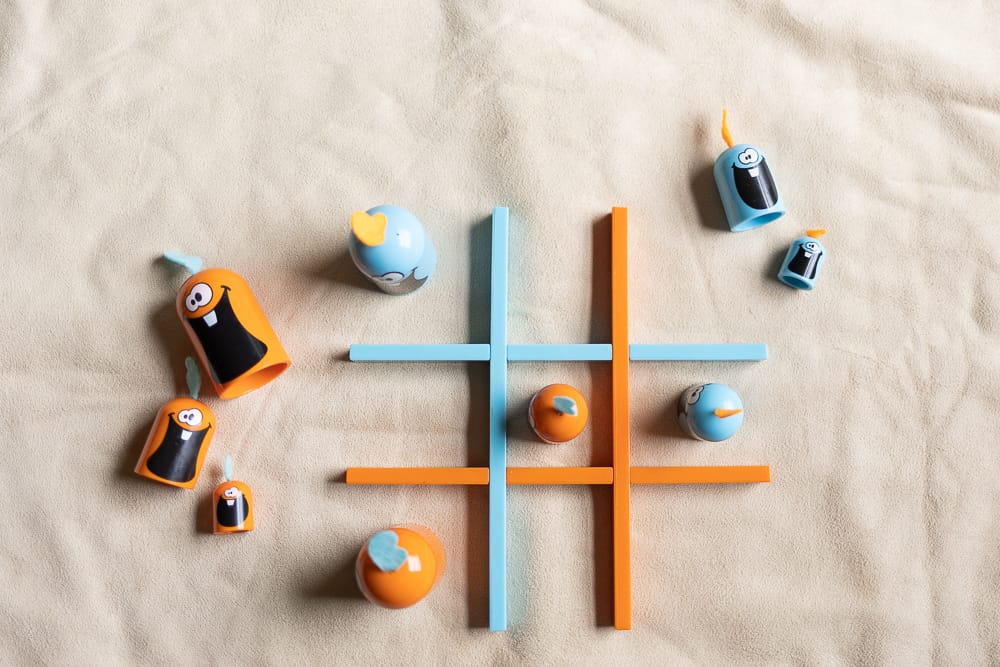
This is the game the adults try to steal. It’s essentially tic-tac-toe but with more strategy and little to no stalemates (you can “eat” the other pieces). It’s great for critical thinking, and good sportsmanship as they have to learn how to handle losing well.
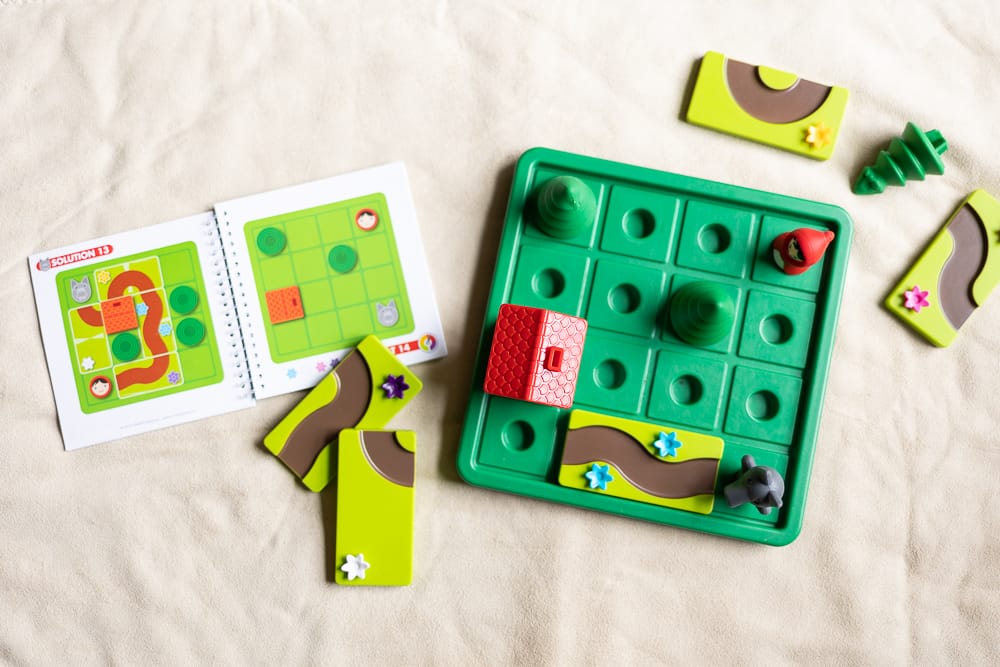
We’re still using this. He gets really excited to see this set up for the day and sometimes wants to do more than the required puzzles, so a win in my book.
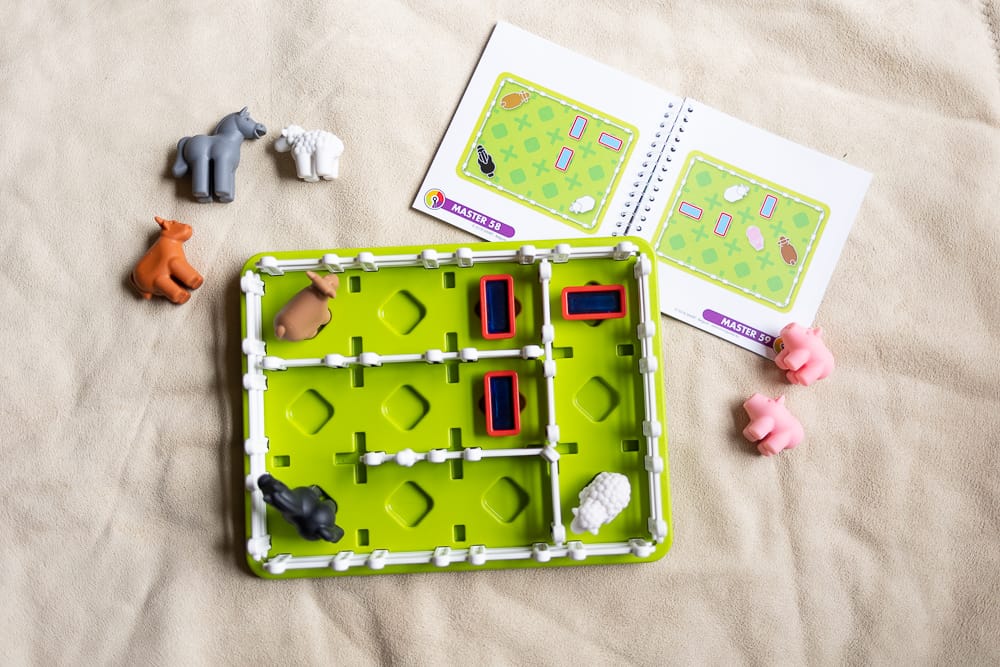
Like Little Red Riding Hood, we’re still using this and it’s great simple logic practice for him–I like these puzzles as a way to keep him occupied while I set up another activity (or fix coffee and a snack plate).
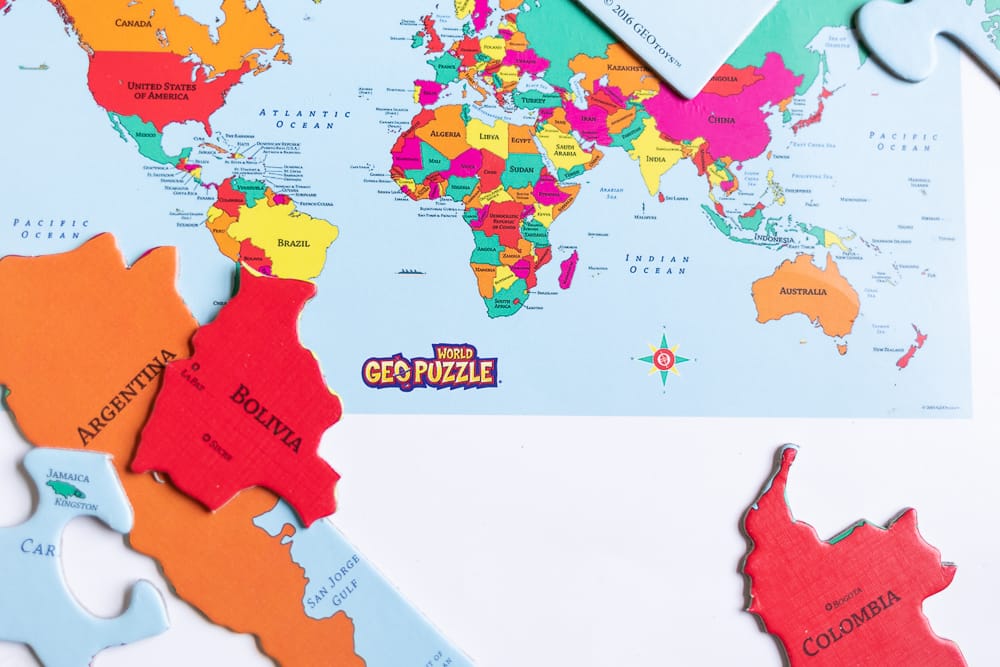
Geography is one of his favorite subjects so he regularly requests to do this just because. I appreciate that they included resealable bags to store the pieces in once you start using them.
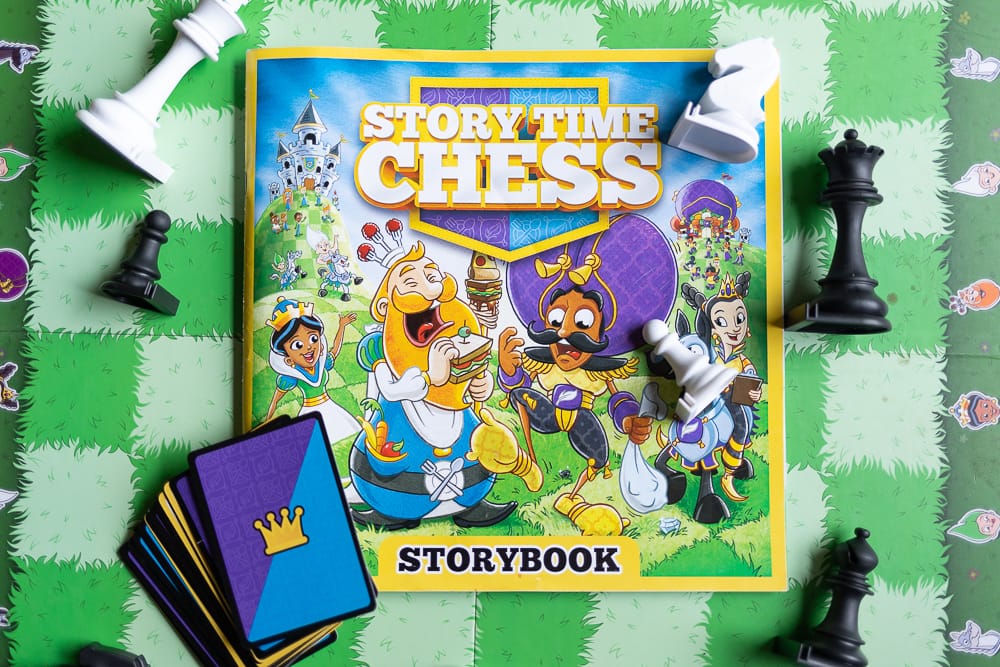
I can’t speak personally to this because I am not the chess player in the family, however from what I’ve observed, the boys (Colton, Ames, and now Rowan) really enjoy this game. It turns each piece into a storybook character to teach how the piece moves across the board, eventually leading your kiddo to play a full game of chess!
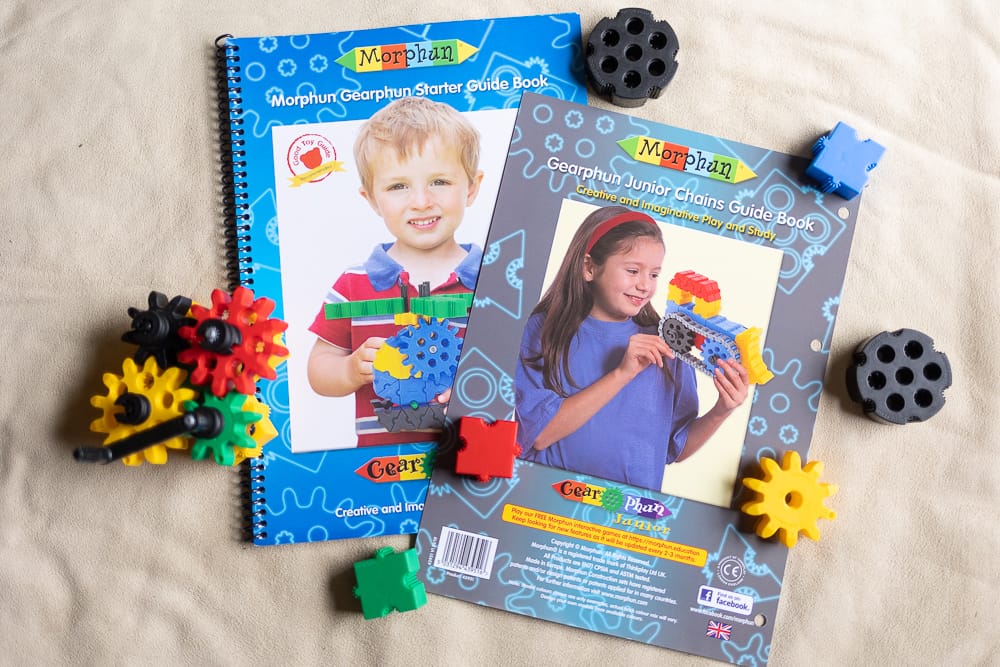
Thought he would love this, he really didn’t care. I think it overwhelmed him with how much there was and if he didn’t receive help with the complicated stuff (gear powered helicopter) he would abandon it. We’ve directed him towards the simpler projects and he’s slowly gaining interest back in it
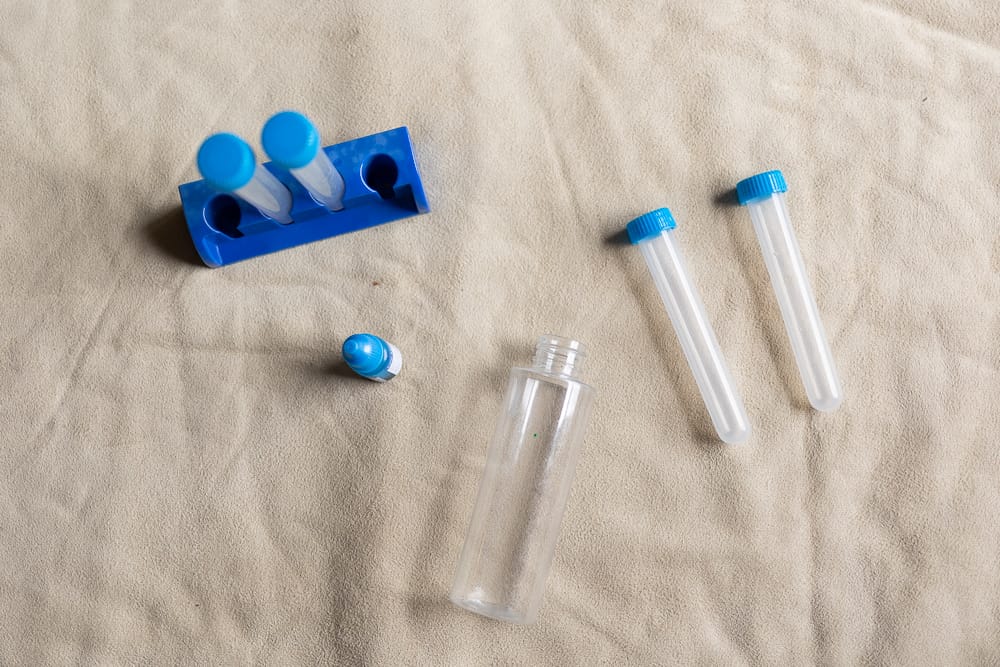
This kit was fine, simple little science experiments, and you had access to videos from the kit makers you could watch to help your kiddo understand what you were doing in the experiment. Really don’t know how much of this we did because after Rowan was born, Ames would hang with my dad for “science time” (he’s a retired science/math teacher) for a bit every other day or so, so I gave him the kit and haven’t seen it since, hence the rather sparse photo.
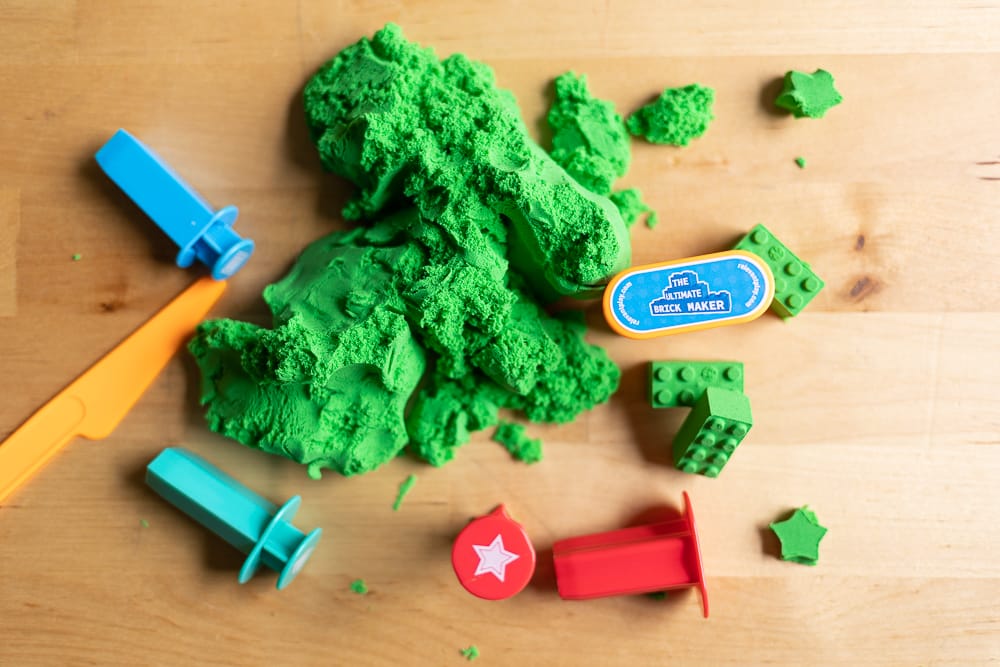
Similar to kinetic sand but “dryer”, retains its shape so you can make usable lego blocks! Mark this as another thing he did not find as cool as I thought he would
Not pictured because I’m honestly not sure where any are now, nice for little hands but I don’t know if they made a huge difference.
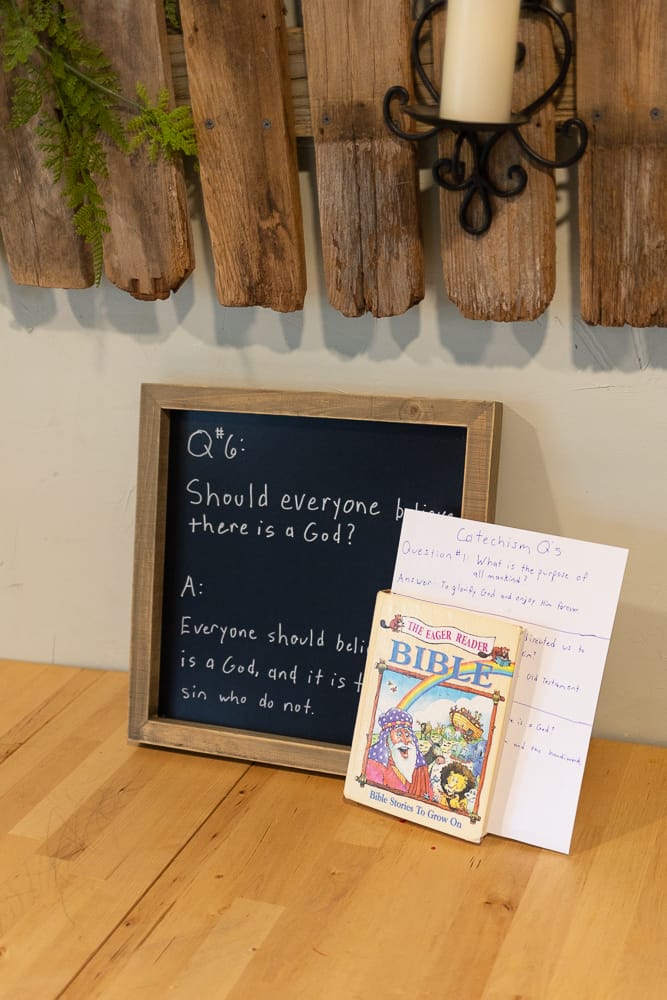
In addition to our kit’s items, we also did a daily Bible reading (with the Bible I got when I was 5!) and would have Ames learn a catechism.
